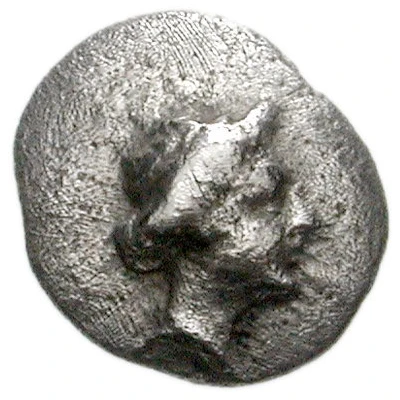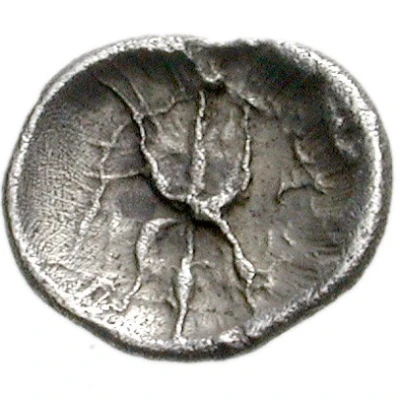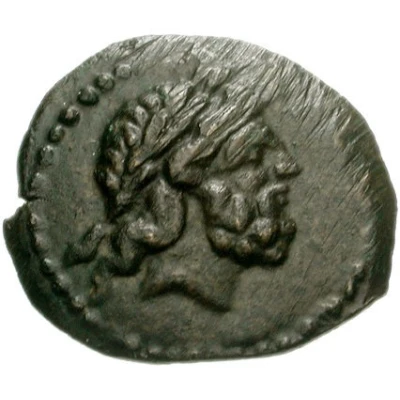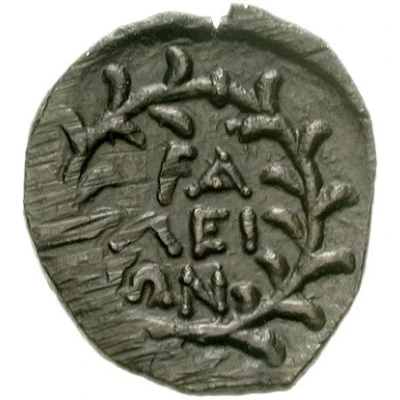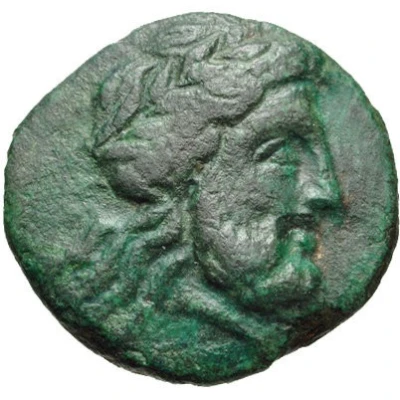
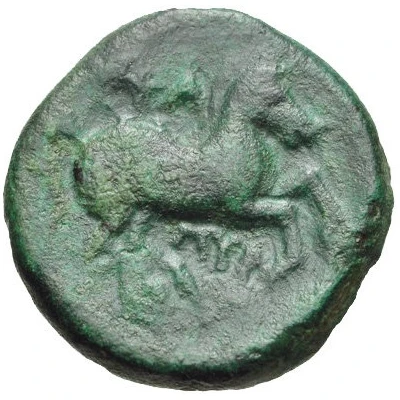

© Classical Numismatic Group, Inc.
Tetrachalkon 300 BC - 250 BC
| Bronze | 4.36 g | 18.0 mm |
| Issuer | Olympia (Elis) |
|---|---|
| Type | Standard circulation coin |
| Years | 300 BC - 250 BC |
| Value | Tetrachalkon (1⁄12) |
| Currency | Drachm |
| Composition | Bronze |
| Weight | 4.36 g |
| Diameter | 18.0 mm |
| Shape | Round (irregular) |
| Technique | Hammered |
| Demonetized | Yes |
| Updated | 2024-10-09 |
| Numista | N#177669 |
|---|---|
| Rarity index | 100% |
Reverse
Horse trotting right, ΠYP below
Script: Greek
Lettering: ΠYP
Interesting fact
The Tetrachalkon coin was used in ancient Greece during the Hellenistic period, specifically in the city of Olympia (Elis) between 300 BC and 250 BC. It was made of bronze and weighed around 4.36 grams. Despite its small size, the coin was an important medium of exchange during its time and was used for buying everyday goods and services. It's interesting to note that the Tetrachalkon coin was one of the first coins to feature a standardized design, with the obverse side bearing the image of a helmeted warrior and the reverse side featuring a quadriga (a chariot pulled by four horses). This standardization made it easier for people to recognize and trust the coin, and it paved the way for the development of modern currency.
